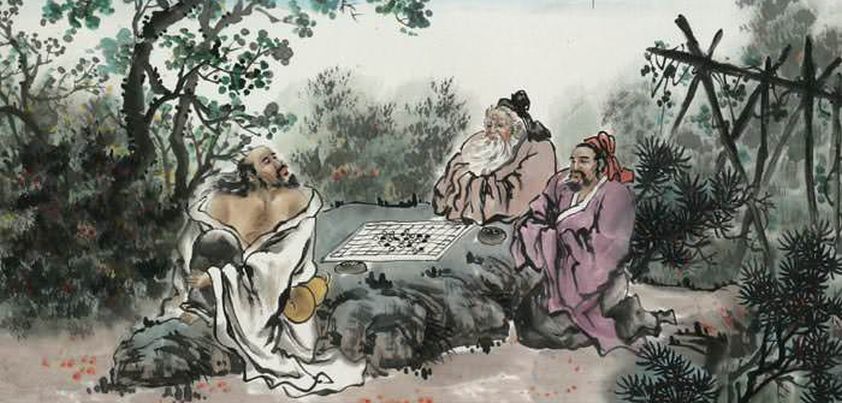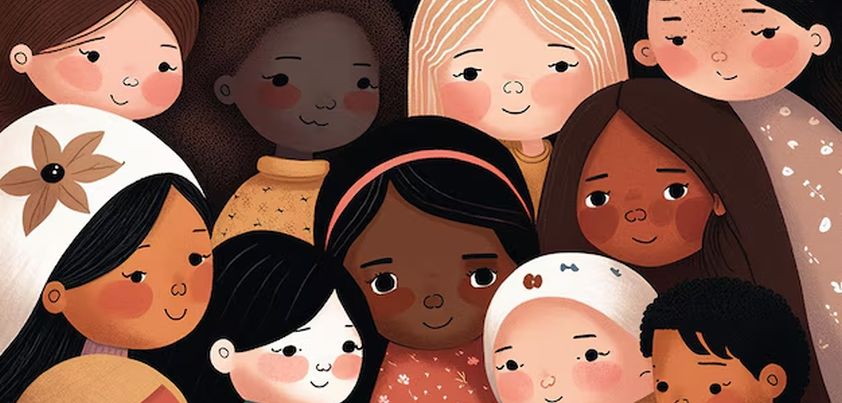 This Chinese folktale retold by Laurence Yep is in two parts. First, readers encounter the kind-hearted Auntie Lily who has spent so much of her money helping others that she now lives in poverty. Her fortunes change for the better when she helps a filthy, foul-smelling beggar who everyone else ignores. Later, her greedy neighbour experiences a different result when, hoping for a similar reward, she helps the same man. The two parts show different sides of the “be kind to others” moral: kindness for kindness’s sake brings its own rewards; kindness in expectation of reward usually leads to disappointment. More…
This Chinese folktale retold by Laurence Yep is in two parts. First, readers encounter the kind-hearted Auntie Lily who has spent so much of her money helping others that she now lives in poverty. Her fortunes change for the better when she helps a filthy, foul-smelling beggar who everyone else ignores. Later, her greedy neighbour experiences a different result when, hoping for a similar reward, she helps the same man. The two parts show different sides of the “be kind to others” moral: kindness for kindness’s sake brings its own rewards; kindness in expectation of reward usually leads to disappointment. More…
Archives
Ribbons
 This excerpt from Laurence Yep’s book of the same name is about three kinds of ribbons: the satin ribbons on protagonist Stacy’s ballet shoes; the silk ribbons traditionally used in Chinese foot binding; and the invisible ribbon binding grandmother, mother and daughter at the end of the story. The central theme is understanding. Already unhappy about interrupted ballet lessons and resentful of her brother’s seemingly favorable treatment, Stacy reacts angrily to her grandmother’s inexplicable rage over her ballet ribbons. Things change when she learns the old woman’s painful secret. Other themes: family, cultural adjustment, courage, passion, sacrifice, connection. More…
This excerpt from Laurence Yep’s book of the same name is about three kinds of ribbons: the satin ribbons on protagonist Stacy’s ballet shoes; the silk ribbons traditionally used in Chinese foot binding; and the invisible ribbon binding grandmother, mother and daughter at the end of the story. The central theme is understanding. Already unhappy about interrupted ballet lessons and resentful of her brother’s seemingly favorable treatment, Stacy reacts angrily to her grandmother’s inexplicable rage over her ballet ribbons. Things change when she learns the old woman’s painful secret. Other themes: family, cultural adjustment, courage, passion, sacrifice, connection. More…
The Homecoming
 This Chinese folktale retold by Laurence Yep is about a poor woodcutter who is easily distracted. He takes a keen interest in everyone’s business but his own, and has an annoying habit of giving advice, whether asked for or not, pointing out how people he meets could do things better. One day, he comes across two strange men playing Xiangqi (Chinese chess) in a forest, and can’t resist stopping to offer suggestions about their best next moves. In a Rip Van Winkle-like conclusion, he finds many changes on returning home, having been being missing for thousands of years More…
This Chinese folktale retold by Laurence Yep is about a poor woodcutter who is easily distracted. He takes a keen interest in everyone’s business but his own, and has an annoying habit of giving advice, whether asked for or not, pointing out how people he meets could do things better. One day, he comes across two strange men playing Xiangqi (Chinese chess) in a forest, and can’t resist stopping to offer suggestions about their best next moves. In a Rip Van Winkle-like conclusion, he finds many changes on returning home, having been being missing for thousands of years More…
The Great Rat Hunt
 This memoir from Laurence Yep includes themes of father-son relationships, accepting differences, and facing fear. A young boy with severe asthma feels left out when he can’t join his father and brother in practicing ball games. Everything changes after they notice signs of a rat in their apartment. When poison and an exterminator don’t work, the father borrows a gun and invites the boys to join him in a hunt. Although no shots are fired, the father claims success. The narrator shares a “trophy” and learns some important lessons about fatherly love and focusing on one’s strengths rather than weaknesses. More…
This memoir from Laurence Yep includes themes of father-son relationships, accepting differences, and facing fear. A young boy with severe asthma feels left out when he can’t join his father and brother in practicing ball games. Everything changes after they notice signs of a rat in their apartment. When poison and an exterminator don’t work, the father borrows a gun and invites the boys to join him in a hunt. Although no shots are fired, the father claims success. The narrator shares a “trophy” and learns some important lessons about fatherly love and focusing on one’s strengths rather than weaknesses. More…
We Are All One
 In this Chinese folktale retold by Laurence Yep, a rich merchant offers a large reward to anyone who can cure his painful eye disease. A poor candy peddler walks deep into a forest in search of a magical herb his mother had told him about. With help from a magical centipede and thousands of ants he becomes “One” with, he returns home with something better, earns the reward and lives happily ever after. The titular theme, that we are all one, conveyed an important social message to early Chinese immigrants in America. More…
In this Chinese folktale retold by Laurence Yep, a rich merchant offers a large reward to anyone who can cure his painful eye disease. A poor candy peddler walks deep into a forest in search of a magical herb his mother had told him about. With help from a magical centipede and thousands of ants he becomes “One” with, he returns home with something better, earns the reward and lives happily ever after. The titular theme, that we are all one, conveyed an important social message to early Chinese immigrants in America. More…